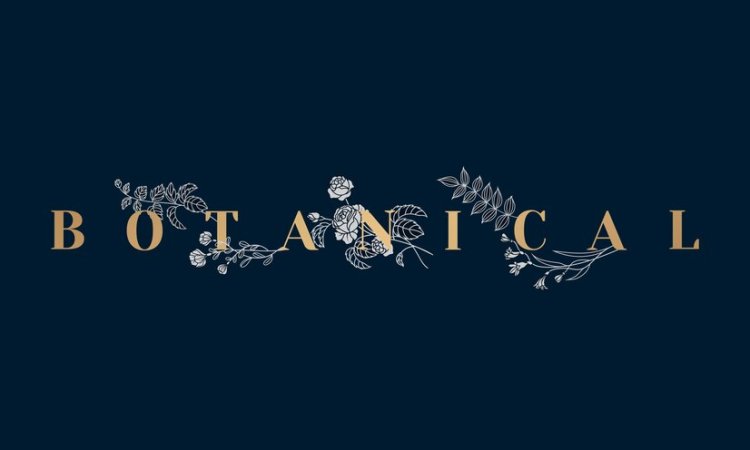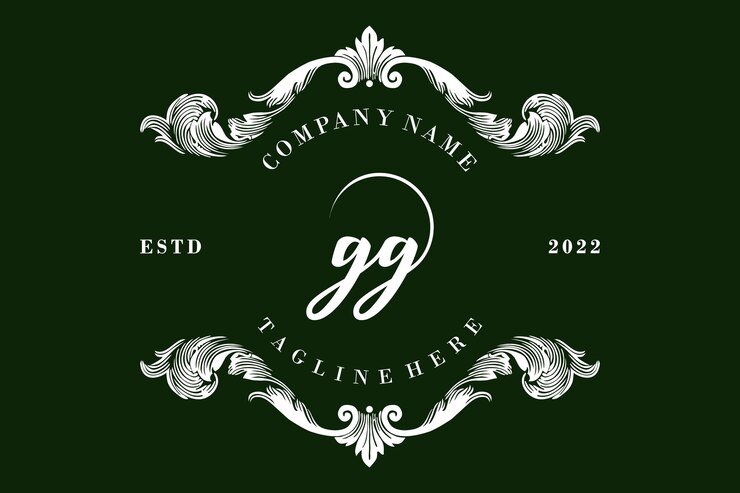The Timeless Elegance of French Fashion Monograms Since 1962
One of the most iconic French fashion Monograms Since 1962 houses leading this trend was Louis Vuitton, whose "LV" monogram had already been introduced in the late 19th century.

Monograms have long been synonymous with luxury, exclusivity, and craftsmanship in the world of fashion. Nowhere has this been more evident than in French fashion, where since 1962, monograms have not only served as symbols of prestige but have also encapsulated the essence of high couture. French fashion houses have elevated monograms from simple design motifs to revered icons of style, identity, and sophistication. Whether adorning handbags, shoes, clothing, or accessories, the French fashion monogram is a symbol that signifies both heritage and modernity.
This article delves into the fascinating journey of French fashion monograms since 1962, exploring how these timeless symbols have evolved, shaped the industry, and left an indelible mark on global fashion.
1. The Emergence of French Fashion Monograms: A Brief History
The 1960s marked a pivotal moment for French fashion, with monograms becoming integral to brand identity and visual recognition. Prior to this era, monograms were often reserved for royalty, aristocrats, and luxury objects, but in 1962, they began to transcend these boundaries.
One of the most iconic French fashion Monograms Since 1962 houses leading this trend was Louis Vuitton, whose "LV" monogram had already been introduced in the late 19th century. However, it was in the post-1960s era that the brand began to emphasize this logo as a global statement of luxury, leveraging it across a broad range of products, from bags to accessories.
The 1960s also saw other prestigious French fashion houses, such as Yves Saint Laurent and Coco Chanel, utilize their unique monograms as a way to project exclusivity and elevate their designs. These logos were not mere decorations but symbols of heritage, precision, and elegance that resonated with discerning consumers worldwide.
2. Why 1962? The Cultural and Fashion Shifts
The significance of 1962 in the context of French fashion monograms can be attributed to broader cultural and fashion movements that were taking place globally. It was the dawn of a new decade characterized by bold innovation, experimentation, and a new sense of identity, particularly in France. This year saw a shift from the classical, restrained elegance of earlier decades to a more liberal, avant-garde approach to style. Monograms became the perfect conduit to express this changing dynamic in fashion.
As the world became more interconnected, fashion houses like Louis Vuitton, Chanel, and others began to focus on creating recognizable and universal symbols of luxury. Monograms allowed these houses to convey their distinct identities through minimal yet powerful design. The logo revolution was also partly a response to the growing counterfeit market, as these brands sought ways to assert their authenticity.
3. The Power of the Monogram in French Luxury Fashion
French fashion monograms became more than just logos; they became symbols of aspiration. They carried an aura of sophistication, refinement, and success. The simplicity of a two-letter or three-letter design—whether it was the interlocked "CC" of Chanel or the flowing "YSL" of Yves Saint Laurent—stood as an artistic statement.
Part of the allure of the French fashion monogram is its link to craftsmanship. Each item that carries a monogram, from handbags to scarves, is meticulously crafted, often by hand, using traditional techniques passed down through generations. The monogram is not just stamped onto an item; it represents hours of skilled labor, attention to detail, and the highest quality of materials.
The monogrammed handbag remains the most iconic canvas for these designs. Whether it’s a Louis Vuitton Speedy bag or a Chanel 2.55, the presence of the monogram instantly elevates the piece to a coveted status symbol, blending art and fashion seamlessly.
4. The Role of Monograms in French Fashion Branding

By the 1970s, monograms were no longer just about decoration; they had evolved into powerful branding tools. Fashion houses began to use their monograms as a way to extend their identity beyond the runway and into everyday life. These symbols became identifiers, setting the French fashion houses apart in an increasingly global and competitive market.
Yves Saint Laurent, in particular, understood the power of branding with monograms. The house’s YSL logo became one of the most recognizable in the world, symbolizing both avant-garde fashion and timeless elegance. Similarly, the Chanel double C monogram wasn’t just about showcasing a logo; it represented a lifestyle of luxury and high fashion, accessible to those who aspired to be part of the upper echelons of society.
These French houses used their monograms to communicate a consistent brand message: quality, innovation, and exclusivity. The minimalist design of these logos meant they could be easily reproduced on a range of items, from haute couture to ready-to-wear, without losing their prestige.
5. The Enduring Appeal of Monogrammed Fashion Pieces
Over the decades, French fashion monograms have maintained their place at the forefront of luxury fashion. Their appeal is rooted in their versatility—able to evolve with changing trends while remaining timeless. Monograms are a celebration of both the brand’s heritage and its ability to innovate.
For example, Louis Vuitton’s monogram canvas, first introduced in 1896, has seen countless reinterpretations. In the 2000s, artist Takashi Murakami collaborated with Louis Vuitton to create vibrant, multi-colored versions of the iconic monogram, appealing to a younger generation while preserving the classic elements of the brand.
Chanel’s monogram, on the other hand, has been used consistently across decades, but subtle variations in material, texture, and size have kept it fresh. This delicate balance between tradition and modernity is what makes French fashion monograms so enduring.
6. French Monograms in Contemporary Fashion
Today, monograms in French fashion are as relevant as ever. Fashion houses continue to experiment with their logos, incorporating them into new and inventive designs that reflect the current fashion landscape. The rise of streetwear and the blending of high fashion with casual wear have breathed new life into these classic symbols.
Balmain is one example of a French fashion house that has embraced the monogram trend in the modern era. Their B logo is incorporated into everything from jackets to belts, creating a strong visual identity that appeals to a fashion-forward audience.
Monograms have also become a staple of accessories beyond handbags, such as shoes, scarves, and even jewelry. The Celine monogram, for instance, has become an essential element in their Triomphe line, while brands like Hermès use their H logo as a subtle yet powerful design feature on items such as belts and bracelets.
7. The Future of French Fashion Monograms: Sustainability and Innovation
As the fashion industry shifts towards sustainability, French fashion houses are rethinking their use of monograms in a way that aligns with these values. There is a growing emphasis on creating timeless pieces that transcend fast fashion, with monograms playing a key role in this movement.
French luxury brands are also experimenting with new materials and sustainable practices, ensuring that their monogrammed items are not only fashionable but also environmentally responsible. For instance, Stella McCartney, a pioneer in sustainable fashion, has incorporated ethical practices into the production of her designs while still maintaining the exclusivity associated with French fashion.
Conclusion
Since 1962, the French fashion monogram has evolved from a simple symbol to an iconic representation of luxury, craftsmanship, and identity. Brands like Louis Vuitton, Chanel, Yves Saint Laurent, and Balmain have harnessed the power of the monogram to establish themselves as leaders in the global fashion industry. Today, these symbols continue to inspire, representing both the heritage and future of French fashion.
As we look ahead, the French fashion monogram will undoubtedly remain a powerful tool for brands, blending tradition with innovation, while continuing to captivate fashion lovers worldwide.
What's Your Reaction?





















